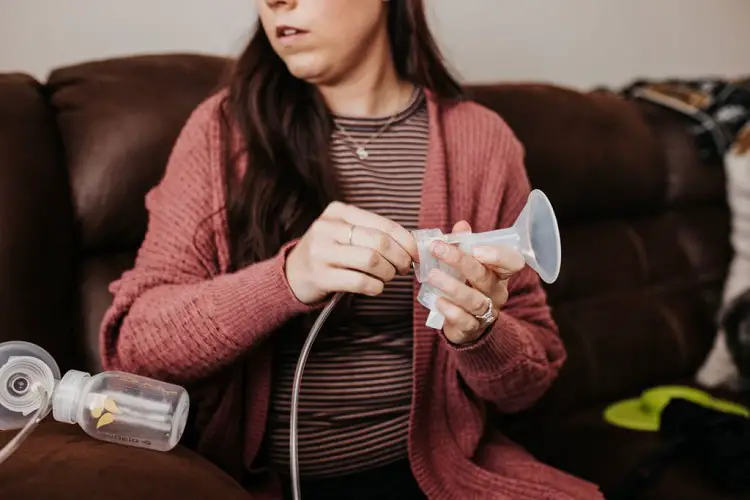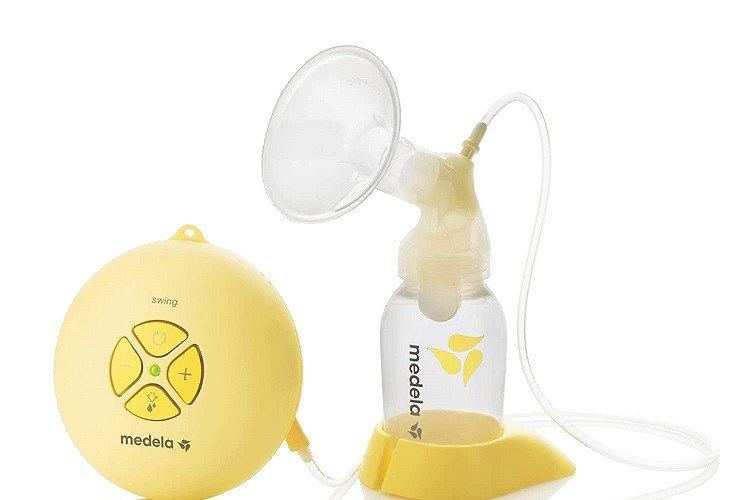Medela breast pump is one of the breast pumps on the market. Its mechanism of action is similar to the sucking action a baby makes when breastfeeding.
Now, using a Medela breast pump may sound a little bit complex for a new mom who may be wondering how to use a Medela breast pump.
Don’t worry, a practical guide on how to use Medela breast pump will be made available for you. We also discuss tips to follow to make your pumping journey an easy one.
Table of Contents
- How To Use Medela Breast Pump
- When To Start Pumping
- Tips For Optimizing Milk Supply
- Preparation for Pumping: Tips To Keep in Mind
- Conclusion
How To Use Medela Breast Pump
The following steps should be followed when you want to use the Medela breast pump during pumping.
- Firstly, ensure that all the preparatory steps are followed.
- Ensure your hands are clean
- Position the assembled breast shield so that your nipples are centered. If not, damage can result from the tugging.
- Turn the machine on. It will start in the fast-paced stimulation phase. You won’t need to use your hands using the Freestyle Breastpump. The Pump in Style Advanced allows moms to pump hands-free or hold the breast shields while holding the support attachment.
- When you feel or see milk ejection, press the expression phase button.
- Adjust the speed knob to a level that feels most comfortable and efficient for you
- When you have finished pumping, remove the tubing from the breast shields.
- Carefully cap the bottles and store the milk.
- Don’t turn the pump off until after you have stored the milk. Excess condensation can be dried by vacuum motion during the extra time.
- Disassemble and clean the machine
If you’re still finding it difficult to use your Medela breast pump, here is a Youtube link to guide you.
Read: Baby won’t drink pumped milk? 7 Helpful Tips
When To Start Pumping

Before you start pumping, discuss it with your doctor or lactation consultant.
It would be best if you discussed the goals of your breastfeeding/pumping with your doctor or lactation consultant to have a consensus on the best method for you before you start pumping.
You can start pumping immediately after delivering your baby if you like. You can decide to choose exclusively pumping or use it as a means of supplementing after breastfeeding.
You discuss these things with your doctor or lactation consultant and know what to do.
Some of the reasons why immediate pumping after birth might be encouraged include:
- Baby’s medical condition
- Your medical condition
- Latch issues
- Desire to share the feeding responsibility of your baby with a non-breastfeeding partner.
There are other things you must put into condition when you are about to adopt pumping breast milk, and they include
- If you think you want to pump because you need to increase your milk supply, you might consider pumping after a regular nursing session a few times a day, depending on the quantity of milk you need.
- If you feel your baby has latching issues or want to pump exclusively, then you will be prepared to pump in place of all nursing sessions. You have to pump day and night, as often as the feeding session of your baby.
How Long To Pump?
This depends on the individual in question. Generally, it will take some time to figure out how long you have to pump.
Women who are pumps often want to try pumping long enough to empty their breasts.
The general rule on pumping duration is about 15 minutes on each breast. You should maintain this standard even if your breast milk stops flowing.
Read: How much milk to pump for daycare
Tips For Optimizing Milk Supply
You must do some things to get the best out of your breast milk supply during a pumping session.
Here are some lifestyles you should adopt so that your milk flow is unrestrained:
- Stay hydrated by taking lots of juice, milk, and water. Avoid caffeinated beverages as they have high tendencies to cause irritations for your baby, should they find their way into your breast milk and through the breast milk into your baby’s system
- Adding a balanced diet to your diet will help you increase your milk supply since lactation burns many calories.
- Try to get enough sleep. Though this may seem a little bit difficult, you sure need it. You can try sleeping while your baby sleeps or even request help from family, friends, or good neighbors with your child so that you conserve enough energy for milk pumping.
- Also, avoid smoking. Smoking also increases the risk of sudden infant death syndrome. Smoking affects milk supply negatively and can even interfere with your baby’s sleeping habits.
Preparation for Pumping: Tips To Keep in Mind
You don’t need to rush into pumping, but you have to prepare for the pumping session before dabbling into it.
You should put the following steps into practice before you start pumping, and they include
Be Hygenic
Before pumping, you need to be hygienic by washing your hands before pumping.
Be Prepared
Be prepared for the pumping session to avoid interruption during the pumping session.
Keep everything you need close by, and they may include a drink and snack if you are the type that likes them, your phone, TV remotes, bottles or milk storage bags for the milk, and a muslin cloth to soak up drips.
Make Yourself Comfortable
You can achieve this by being at ease. Your body being at ease is one of the criteria for the release of oxytocin which is the hormone that aids in milk flow.
It would be best if you were relaxed for the pumping process to run smoothly and for your arms and back to be well supported.
When pumping, you should choose a private and comfortable place and ensure your arms and back are well supported.
Hold your breast shield between your thumb and index finger and support your breast with your palm and other fingers if you aren’t wearing a pumping bra.
It is important to hold the breast shield gently against the breast. Pressing too hard could compress your breast tissue and obstruct the milk flow.
Massage Your Breast
Kickstart your letdown by massaging your breast before pumping to trigger your flow. You can warm your breast by applying a warm compress.
Kick Start Your Let Down
You can also influence your pumping rate by having your baby available. Their presence can cause stimulation for you and help you release the oxytocin hormone.
If your baby isn’t around, you can try looking at a photo or video of your baby or smiling at something that belongs to your baby.
Connecting with your baby simultaneously as pumping is another way to boost your oxytocin level and get your milk flowing.
Set a Time Limit on How Long to Pump
As soon as your supply is established (after about four to six weeks), you can tailor how long you should pump, saving you valuable time.
Mothers with a high number of letdowns must pump more often and for longer than those with a low number.
Read: What to do with an old breast pump – 3 helpful ideas
Conclusion
Hopefully, you’ve learned how to use Medela breast pump and how easy to use. Before you start pumping, discuss it with your doctor or lactation consultant.
Don’t forget to imbibe a healthy lifestyle that will aid you during the pumping session, as it is essential.
You don’t need to rush into pumping, but you have to prepare for the pumping session before dabbling into it. Follow the pumping method religiously, and you will be happy with the outcome.
